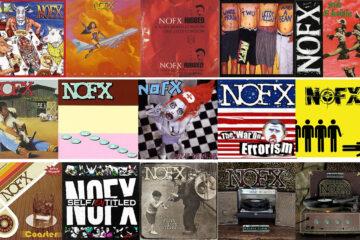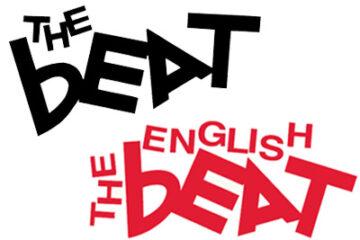Dancing to music has been a thing for literally thousands of years.
There are cave paintings in India depicting dancing that are over 9,000 years old.
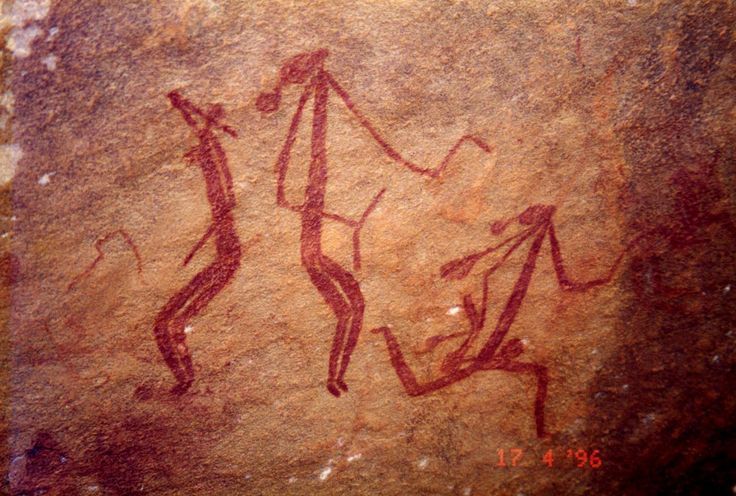
But to get from dancing to Mosh Pits is a long way!
The idea of a group of people squashed in very close quarters and jumping into each other was totally unheard of more than a few decades ago.
So how did we get from sitting in rows of chairs and quietly enjoying the music to here?
The origins – Skanking
I think the origins of the mosh pit can be traced to the idea of Skanking, created by the Rude Boys of Ska and Reggae music of the late 50s and 60s.
So synonymous is Skanking with Ska in fact, that the image of it literally became the symbol of Two Tone music.
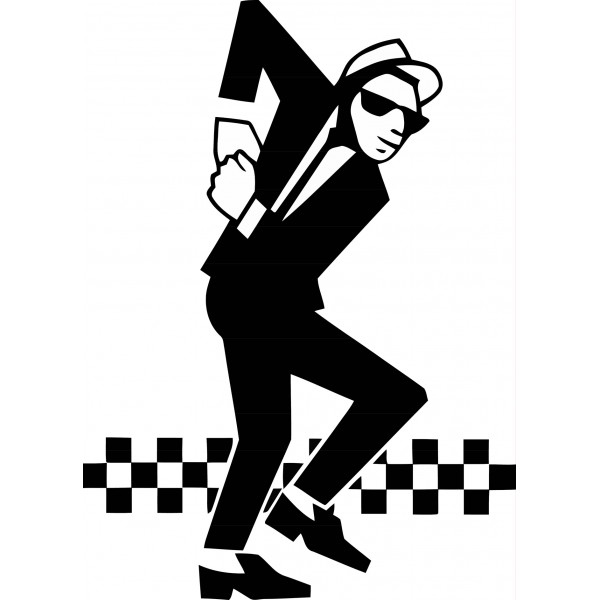
To Skank was to dance, but in a more violent style. The ‘Static Running Man’ dance with feet stomping and closed-fist arm punches.
The idea of Skanking seems to have been to dance, but to look hard while you were doing it.
So we see dancing moving towards a more violent looking thing, but it was a solitary movement, it wasn’t done in a group and there was definitely no jumping into other people.
Pogo
The next step towards the mosh pit was the Pogo, invented by the punks of the late 70s.
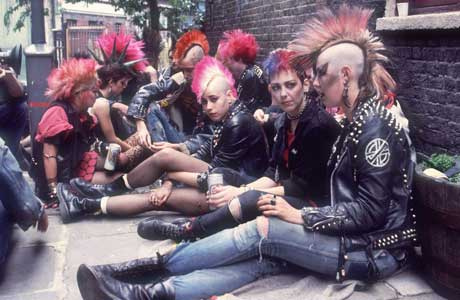
The basic idea of punk was that anyone could make music, and so there was an explosion of indie/DIY bands.
All these bands then needed DIY venues to play their gigs, so a lot more venues popped up in very small pubs and dance spaces.

This meant no-one could easily see the band, so people started jumping up and down to get a better view of the band.
Then everyone started doing it, and the Pogo was born! It was a very pragmatic approach to the issue.
Pogo-ing became such a phenomenon, that bands even started to sing about it.
Here’s a clip of Debbie Harry from 1978 explaining, quite sarcastically, that the Pogo is dead, but for historical reference, here’s how it was done.
Note: Sid Vicious claimed that he invented the move, as a way of making fun of people who came to punk gigs but weren’t punk, though this story isn’t exactly definite.
Also, there is footage of a Pink Floyd gig from 1966 which shows an audience member ‘Pogo-ing’, obviously before term had been invented.
It’s obviously difficult to precisely pinpoint the invention of the Pogo, because it’s such a basic movement that serves a purpose.
It makes sense that the Pogo was ‘invented’ by dozens of people before it became A Thing.
Mosh/Mash
Finally we get what would be recognised as a Mosh Pit today, invented in the early 80s at hardcore punk shows.
Originally called ‘Mashing’ in Fanzines of the time, though still pronounced ‘Moshing’, there is no definite origin to the term or credit to who invented it.
Mash makes sense as a pit is people getting ‘mashed together’ as they jumped all over, and Mash to mean dancing was already a term, as in the ‘Monster Mash‘ from 1962.
Regardless, the Mosh Pit was born at the gigs of bands like Black Flag and Fear.
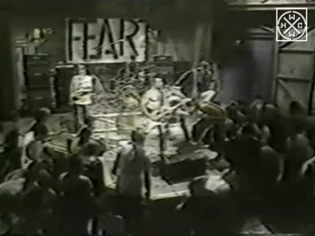
(A performance which got them banned from performing again)
The energy and the anarchic nature of the bands led to fast moving audiences who wanted an outlet for their energy.
Many bands would try to incite the audience to mosh harder and with more energy, although not all bands were happy with the act.
The American post-hardcore band Fugazi always opposed moshing.
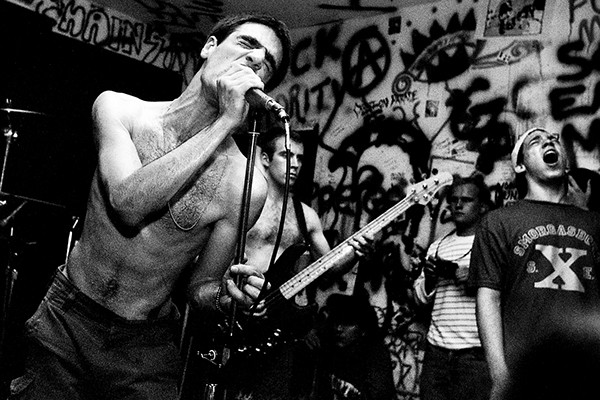
Oftentimes the lead singer, Mackaye, would single out audience members who were doing it and ask them to stop.
“See, [slam dancers] have one form of communication: violence … So to disorient them, you don’t give them violence. I’d say, ‘Excuse me, sir…’- I mean, it freaks them out – ‘Excuse me, sir, would you please cut that crap out?”
Ian Mackaye
As time went on and the hardcore punk scene split into grunge, metalcore and other, more widely recognised genres, moshing went with them and soon spread across the whole world.
Variants
Since the origin of the Mosh Pit in the 80s, Mosh Pits haven’t changed all that much.
There have only developed a few different ways to Mosh, so let’s go over the basics here.
Mosh Pit
Your standard Mosh Pit, usually created right at the front of the stage, though there is usually another line of people just in front of the pit, who want to be as close to the band as possible.
The Mosh Pit is usually as wide as the stage and usually around 5-10 people deep.
Participants of the Pit jump and down and into each other as the music plays.
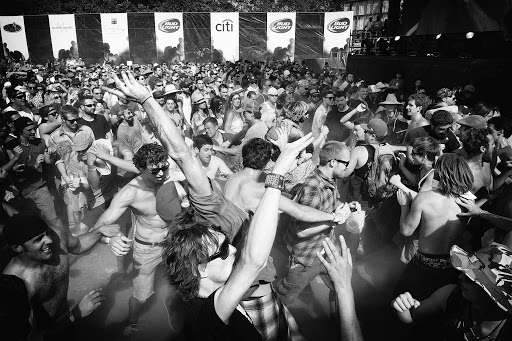
Circle Pit
For a Circle Pit, the space for the pit opens up and the middle of the pit remains fairly empty, as all the participants run, anti-clockwise, around the edge of the pit.
Circle Pits can become incredibly large, and there is less chance of injury, as you are just running in a circle rather than jumping into each other.
Wall of Death
This is the extreme version of a Mosh Pit, in which the crowd of the pit divides in half, and each half stands at one side of the pit.
On a signal, usually given by the lead singer of the performing band, the two sides run into each other and then a regular Mosh Pit begins.
The dangers of this variant should be really be quite obvious….
In fact, many venues make bands promise to not encourage Walls of Death because of the significant chance of injury they pose.
Crowd Killing
Sometimes an ideas develops and evolves. And sometimes that evolution is absolutely awful and it should be undone as quickly as possible.
For example, New Coke was one of these evolutions.
Crowd Killing is the New Coke of Moshing.
I always think of Moshing as Energetic Dancing. You jump into people and get crushed, but your goal is never to intentionally hurt anyone else, it’s just to have a good time and dance like mad.
Crowd Killing is the exact opposite of this. The goal is just to injure as many people around you as possible, and it’s not a very popular thing to do.
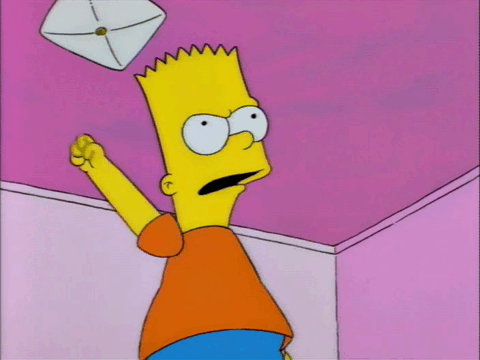
Through swinging closed fists, kicking hard and at random, or shoving people to the ground, Crowd Killing just aims to be as destructive as possible.
Again, this has never been the intention of a Mosh pit, even when out was first invented in the Hardcore Punk scene. People got injured, yes, but that was a by-product, not the sole intention.
Even Walls of Death, with their obvious capability to harm, are not FOR that purpose.
In fact, Crowd Killing goes against the Golden Rule of Mosh Pits.
If someone falls down, you pick them up.
Mosh Pit Etiquette
Moshing may seem violent and dangerous, but you should always look out for the other people in the pit and help them if they are injured.
Wrap Up
A Mosh Pit is a place to let out some pent-up energy and dance in an energetic way. They have changed over time, but there haven’t been any huge changes to Moshing in the past few years, except Crowd Killing, which we all hope goes away as soon as possible.
For more advice on how to act in a Mosh Pit, check out my blog post, The 5 Rules of a Mosh Pit.
